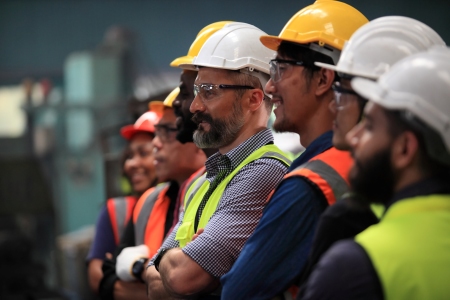 In the dynamic world of construction, versatility and adaptability are key to success. Cross-training your craft professional workforce is a strategic move that can significantly enhance your construction projects. It involves training employees in multiple skills and trades, allowing them to contribute to various aspects of your projects. Cross-training is an investment in the key resource of employees and keeps them engaged and feeling like they are a priority for the company. In an industry where the war for top talent is fierce, investing in a wide set of skills for your workforce is a good strategy for retention as well as production.
In the dynamic world of construction, versatility and adaptability are key to success. Cross-training your craft professional workforce is a strategic move that can significantly enhance your construction projects. It involves training employees in multiple skills and trades, allowing them to contribute to various aspects of your projects. Cross-training is an investment in the key resource of employees and keeps them engaged and feeling like they are a priority for the company. In an industry where the war for top talent is fierce, investing in a wide set of skills for your workforce is a good strategy for retention as well as production.
1. Increased Productivity and Efficiency
Cross-training your craft professionals ensures that you have a flexible workforce capable of tackling a variety of tasks. When employees are proficient in multiple skills, they can step in to assist on different aspects of a project as needed. This versatility minimizes bottlenecks and keeps the workflow smooth, ultimately increasing overall productivity and efficiency. Additionally, when one scope of work is complete or not yet started craft workers are able to move laterally to keep their jobs as well as keep the company moving forward.
2. Cost Savings
Having a cross-trained workforce can lead to significant cost savings. When you don't have to rely on specialized subcontractors for every aspect of a project, you reduce subcontracting costs. In addition, cross-trained employees can help prevent costly delays and rework by addressing issues promptly and effectively. Granted there is an initial investment in the training but that is heavily outweighed by the increase in ability to deploy your workforce in a variety of ways and the reduction of turnover due to the cyclical nature of construction and the ongoing change in project needs and timelines.
3. Reduced Downtime and Delays
All construction projects face unexpected challenges and changes. With a cross-trained workforce, you have a safety net to mitigate these issues. If a worker with a particular skill is unavailable or a project requires immediate attention in another area, cross-trained professionals can step in to keep the project on track, reducing downtime and delays. Delays and downtime always impact other trades, general contractors and even come to the attention of building owners at times. Nobody wants to have the reputation as the company that causes the backlog of work or the downtime on a project. Proactively ensuring that your workforce is skilled in many if not all aspects of your work is critical to keeping the job flowing and the reputation of being on-time every time.
4. Enhanced Safety
Workers who are unfamiliar with a job or in a rush tend to be more likely to encounter unsafe work practices or fail to identify potential hazards. In construction this is unacceptable as safety on jobsites is at the forefront of all those involved in project development and management. Employees with a broader skill set can better identify and address safety hazards in various aspects of the project. They can also step in to help during emergency situations, providing crucial assistance until specialized help is available. Their greatest impact to the safety of the project is that they are aware of what to look for in areas where they are cross trained and are skilled to perform tasks in a safe and productive manner even it the scope is outside their more usual tasks.
5. Team Cohesion and Collaboration
Cross-training fosters a sense of teamwork and collaboration among your craft professionals. When employees have a deeper understanding of each other's roles and responsibilities, they are more likely to work together effectively. This improved communication and collaboration can result in smoother project execution and better overall outcomes. This can also be true in the management of projects in the field and office. The more we understand the nature of the job before our contribution and after our role the better prepared we are to help the organization operate collaboratively and with efficiency.
6. Professional Development
Cross-training presents an excellent opportunity for professional development. Employees can expand their skill set and knowledge, making them more valuable assets to your company. This not only benefits your organization but also provides career growth opportunities for your workforce. Research has shown that when growth opportunities are offered to employees, they are more engaged and more likely to stay with the company. Developing employees through cross training then has a direct impact on retention which impacts recruiting, hiring, and onboarding which are very costly programs for most companies.
7. Adaptation to Market Changes
The construction industry is constantly evolving, with new technologies and trends emerging regularly. Cross-trained employees are more adaptable to changes in the industry because they have a broader skill base. They can quickly pivot to accommodate new project requirements or adopt innovative construction methods.
Conclusion
Cross-training your craft professional workforce is a strategic investment that can yield numerous benefits for your construction projects and your organization as a whole. It promotes versatility, efficiency, cost savings, safety, collaboration, professional development, and adaptability. By fostering a well-rounded and adaptable workforce, you position your construction company for success in an ever-changing industry. In a field where adaptability is a cornerstone of excellence, cross-training is a valuable tool that can help your projects thrive.
Building Excellence: The Benefits of Cross-Training your Craft Professional Workforce
by Angela Taylor | October 26, 2023


